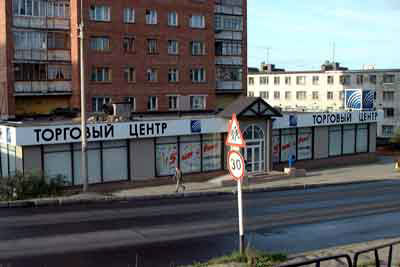 Murmansk city (1989 pop. 468,000), capital of Murmansk region, NW European Russia, on the Kola Gulf of the Barents Sea. The terminus of the Northeast Passage, it is a leading Russian freight port and a base for fishing fleets and is the world's largest city N of the Arctic Circle. It ia a major naval base, and the main home port of the Russian nuclear submarine fleet. The port at Murmansk is ice free. The city is also a railroad terminus and is linked by rail with Moscow and St. Petersburg. Murmansk has Murmansk city (1989 pop. 468,000), capital of Murmansk region, NW European Russia, on the Kola Gulf of the Barents Sea. The terminus of the Northeast Passage, it is a leading Russian freight port and a base for fishing fleets and is the world's largest city N of the Arctic Circle. It ia a major naval base, and the main home port of the Russian nuclear submarine fleet. The port at Murmansk is ice free. The city is also a railroad terminus and is linked by rail with Moscow and St. Petersburg. Murmansk has fish canneries, shipyards, textile factories, breweries, and sawmills. Lumber, fish, and apatite are exported, and machinery and coal are imported. Murmansk was only a small village before World War I. The port and its rail line inland from Petrograd (now St. Petersburg) were built in 1915-16, when the Central Powers cut off the Russian Baltic and Black Sea supply routes. Allied forces occupied the Murmansk area from 1918 to 1920, during the Russian civil war. A major World War II supply base and port for Anglo-American convoys, Murmansk was bombarded by the Germans. During the 1970s and 80s, the sea o fish canneries, shipyards, textile factories, breweries, and sawmills. Lumber, fish, and apatite are exported, and machinery and coal are imported. Murmansk was only a small village before World War I. The port and its rail line inland from Petrograd (now St. Petersburg) were built in 1915-16, when the Central Powers cut off the Russian Baltic and Black Sea supply routes. Allied forces occupied the Murmansk area from 1918 to 1920, during the Russian civil war. A major World War II supply base and port for Anglo-American convoys, Murmansk was bombarded by the Germans. During the 1970s and 80s, the sea o f Murmansk was the dump site of the exhausted cores of Soviet nuclear reactors. The city has a polar research institute. Murmansk oblast, with rich apatite and nickel mines, was enlarged after World War II through the incorporation of former Finnish territories, notably Petsamo (Pechenga). f Murmansk was the dump site of the exhausted cores of Soviet nuclear reactors. The city has a polar research institute. Murmansk oblast, with rich apatite and nickel mines, was enlarged after World War II through the incorporation of former Finnish territories, notably Petsamo (Pechenga).
|













 State
State  Cities
Cities